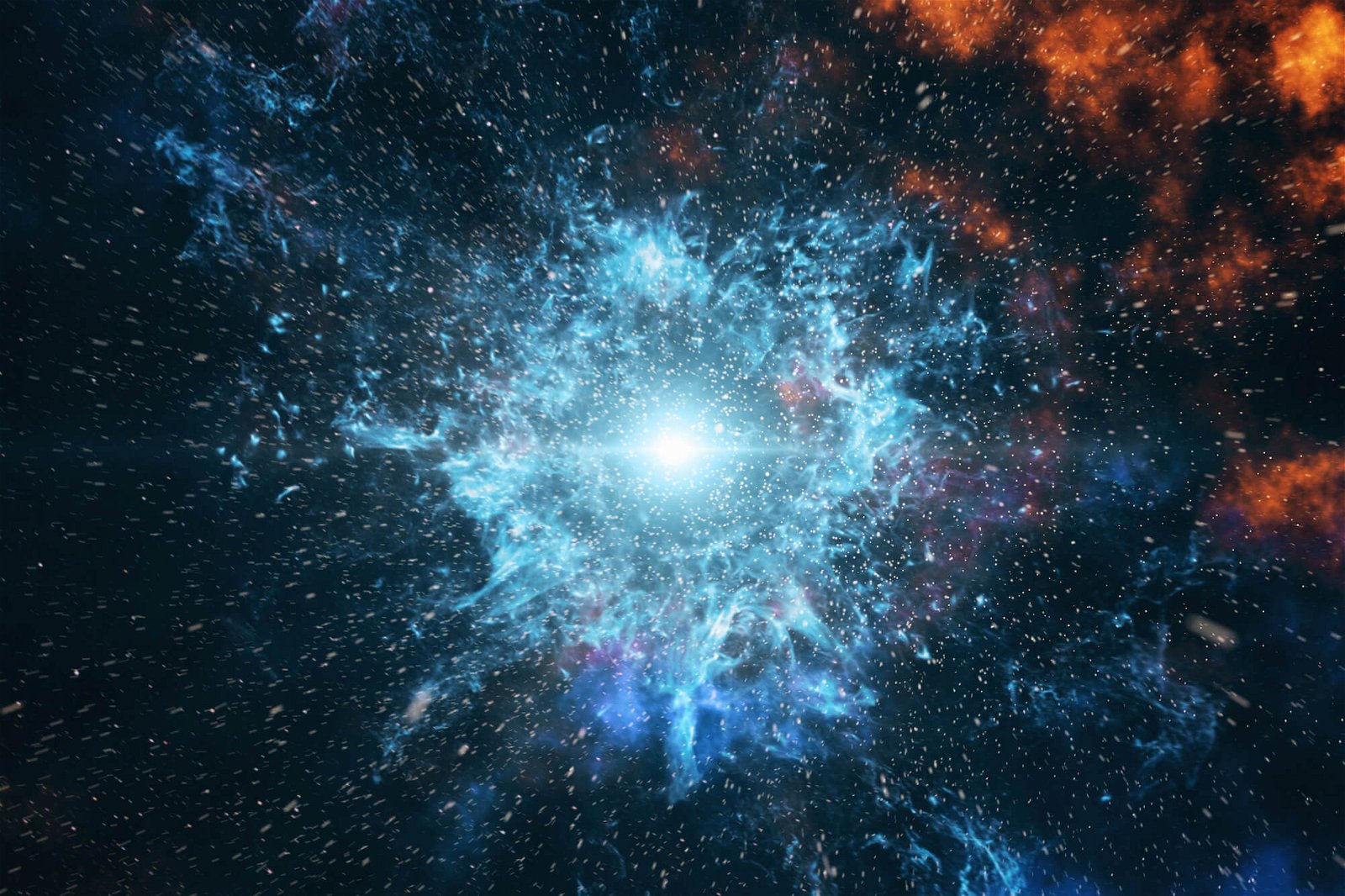Yes, and that's the problem. I can believe you saw a black hole being created because you have expertise in the field and others who saw it, too. However, that's different from a star being created. If that takes millions of years, then no one can see it.
Well, you see, the moment a star lights up internally, there is a delay in that light even getting to the surface. The sunlight you see outside right now was likely created thousands of years ago and has been trapped in the dense solar matter slowly working its way to the surface. Then the other problem is that the star is buried deep within the solar nebula, the torus of gas and dust around the star not consumed by it waiting to condense into rocky and gaseous planetary bodies the excess of which will be pushed away and eventually cleared up by the solar pressure of the star once it fully ignites. So it isn't like someone flicked a switch and BAM, a star appears! But here is one such star making its first appearance outside its nebular torus:

But it isn't conjecture either. You don't see a cornstalk or a tomato plant grow neither yet you know they come from seed. Step by step you first see the seed sprout, then you see the dicotyledon emerge, then the stem then the first set of leaves. You come back the next day and see more leaves, then over weeks, you see the plant grow and bear fruit. There is no doubt the plant grows from seed yet if you sit there all day long and watch the plant, it just sits there doing nothing. There is no doubt about the life and development of stars and planets.
Moreover, the creation scientists state, "Disks (and clouds) of gas and dust could have been created when the stars were created, just several thousand years ago.
I'd love for anyone to explain to me the physical processes of how that works! Pure hypothetical conjecture by pseudoscientists.
The dust disks dissipate over time, and today, astronomers studying these disks find that the disks do not always fit their models. Recent research on dust disks has turned up examples of stars that according to accepted ideas of stellar evolution are old, yet they are observed to have extensive dust disks.
Again, I need someone to point out a Pop II star that fits that description.
Astronomers have generally believed that older stars could not still have dust disks. This calls into question the old-age assumptions regarding these disks and the stars found with them. George Rieke from the University of Arizona has recently commented on this problem, “We thought young stars, about 1 million years old, would have larger, brighter discs, and older stars from 10 to 100 million years old would have fainter ones . . . But we found some young stars missing discs and some old stars with massive discs.”
For one thing, I have to laugh at whoever wrote the above calling a star just 10 to 100 million years old an "old" star!

There are stars in the sky billions of years old. Further, stellar production is a very complex process with many variables and it is completely understandable to find a "young" star with no accompanying gas cloud, but again, I can't argue vagaries, I need a specific star and situation to see just how "young" the given star is and its particular circumstances! Without specifics, everything presented so far amounts to so much bloviation.
So, a question raised is why have the dust particles close to the star not evaporated when it is more than hot enough to vaporize them. This suggests the disks are very young indeed. To evolutionary scientists, the dust grains near the star would be perhaps hundreds of thousands to millions of years old. Over those kinds of time scales the dust could not still be so close to the star unless something keeps it from being too hot, for example, gas shielding the dust from the star’s light. This is an example of how scientists assume processes they have not observed are at work in order to explain how the observed dust could still be present. Instead, why not consider the star and the disks to be only several thousand years old, then many of the difficulties of explaining the dust disks disappear."
Now this is getting tiresome. You can't argue in a vacuum, for all I know, the star has a high proper motion and wandered into the nebula, or the gas is actually being ejected, coming from the star itself! Or maybe a planet broke up or two collided 15,000 years ago leaving a cloud of dust around the star. This is all pure pseudo science crap and not worth responding to. If you want to know a little about stellar formation, try these:
Here I review some of the naturalistic theories of how stars form. I discuss many topics never described in the creation literature before.

answersresearchjournal.org

en.wikipedia.org

en.wikipedia.org


 .
. There are stars in the sky billions of years old. Further, stellar production is a very complex process with many variables and it is completely understandable to find a "young" star with no accompanying gas cloud, but again, I can't argue vagaries, I need a specific star and situation to see just how "young" the given star is and its particular circumstances! Without specifics, everything presented so far amounts to so much bloviation.
There are stars in the sky billions of years old. Further, stellar production is a very complex process with many variables and it is completely understandable to find a "young" star with no accompanying gas cloud, but again, I can't argue vagaries, I need a specific star and situation to see just how "young" the given star is and its particular circumstances! Without specifics, everything presented so far amounts to so much bloviation.

